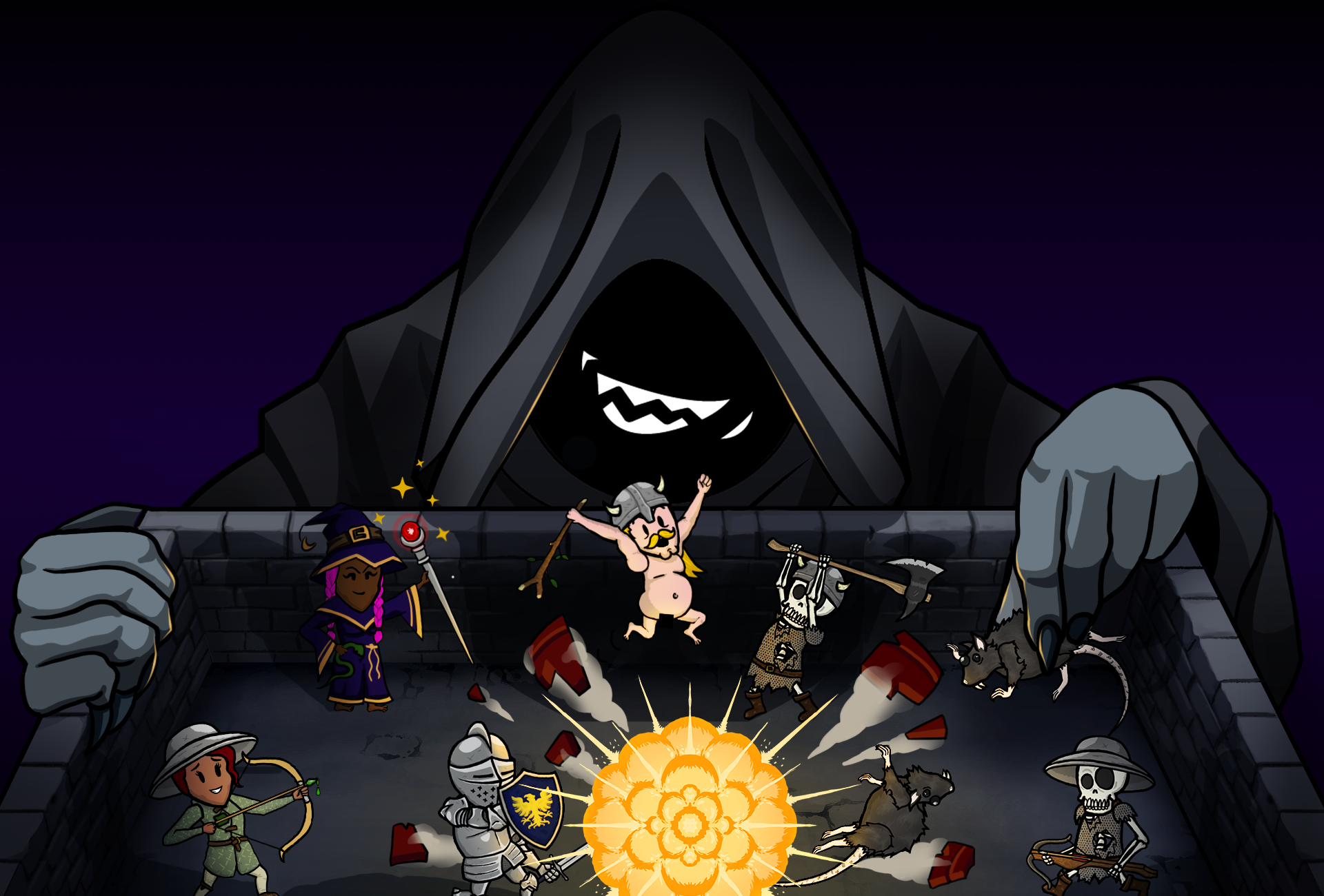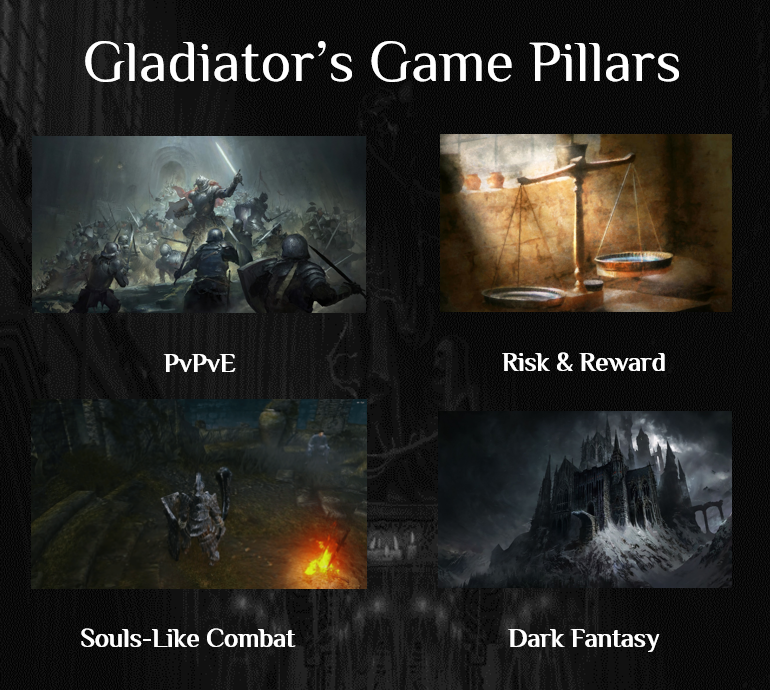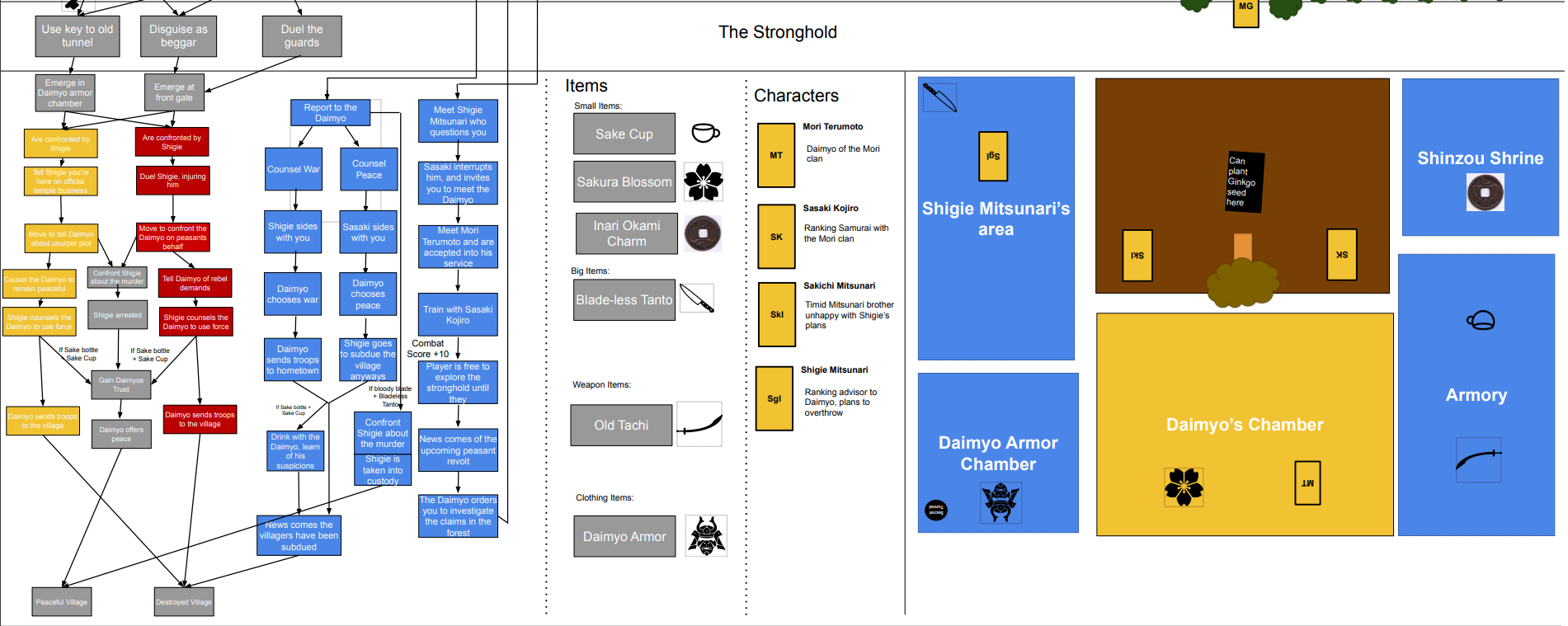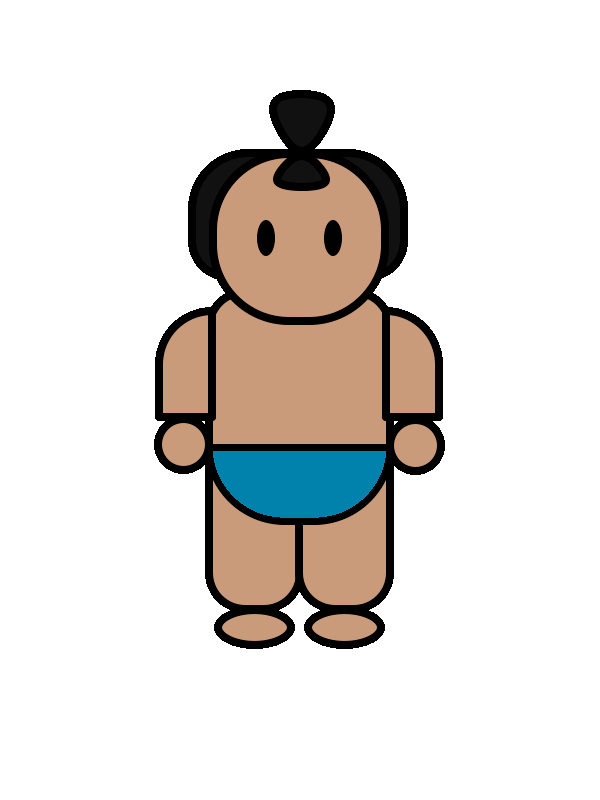Game Dev | MBA
Bjorn Talbot
bjorntalbot@gmail.com

I worked on Saleblazers as a Lead Game Designer after a major pivot. I managed a team of designers to realign and realize the new vision for the game. I also collaborated with a team of 8 artists to marry the design elements and art direction. As Lead Game Designer I oversaw combat, enemy design, open world design, and systems design.
Gladiator makes souls-like boss fighting a competitive multiplayer objective
Think Elden Ring meets Hunt Showdown
Gladiator was developed into the demo stage, made it to playtesting with several publishers, and received a 4.7 / 5 on the fun scale from independent focus groups.
I led the team and headed up all game design.
Foundations
My inspiration for this game was the organic fight clubs in previous souls titles and the PvPvE fiesta of Hunt Showdown. I wanted to bring the fun of souls-like boss fighting to a PvP arena, and create a forever game for fans of the souls-like genre.
My team and I interviewed around 75 souls-like players to figure out what they might be looking for in a PvPvE title in the space to come up with our core pillars and establish our game loop.
We knew generally what our audience was looking for in terms of combat after research, but we also wanted to change some things up.
We started with four combos, two light and two heavy attack combos. Each of these combos would have a slightly different purpose such as poking from range or slashing in a wide arc to roll catch. We also had a rolling attack, sprinting attack, and plunging attack.
Players could lock onto each other or aim freely, and had access to a dodge roll and parry for defensive measures. We got a P2P configuration up ASAP and started testing with players.
After more playtesting we tweaked some features in the combat system.
First, we shortened wind downs on all attack animations and shortened blend out times to give control back to players sooner. We also added an input queueing system to allow players to slightly mistime button presses and still get their desired action.
We also added in a guard which would allow players to block damage at the cost of stamina.
Combat
Instead of using traditional hitboxes, our combat system utilized accurate tracing along weapon arcs to avoid “that didn’t hit me” syndrome.
Finally we added a punishing stagger to a parried opponent to make the mechanic more aligned with our risk-reward design pillar.
We also tweaked damage values, wind up times, and combo fluidity to give our combat a more smooth feeling.
In our first playtest combat was scored at a 3/5 on the clunky-smooth scale, by the end of the demo we had it up to a 4.5.
Boss Design
For our boss I wanted to tie the design of the boss into the arena design so that the fight would feel tight.
I settled on a jousting theme for the boss, with paths around the arena for the boss to run around and charge down players. This would also break up the action and give windows for PvP combat while the boss vacated the arena.
I was inspired by Gyobu from Sekiro, a boss which has high mobility and often took to charging around the boss arena.
While Gyobu is a mounted horseman set in feudal Japan, I wanted to add more of a dark fantasy spin to our boss.
Our final design was called…
Liliana, the Profane Amalgamate
Visual Design Process
Animation
While working on finalizing the model, I worked with an animator to create movement and attack animations for the boss trying to emphasize her unique character.
AI Logic
When programming the boss I designed the system around ranges to the boss’s target.
Using UE4’s Behavior Tree system, I designed the encounter to semi-randomly execute tasks like charging around the arena, changing target, or doing a non-attack movement like strafing.
If none of these tasks were chosen, the boss would decide which action to take based on the distance to their target. This meant they could do a running attack at a player far away, or perform a disengage if a player was too close.
Additionally, the boss could be staggered with enough damage which would interrupt all other actions.
Bringing it all together
The first draft of the fight felt good but still needed some work. I tweaked hitboxes so that the player couldn’t abuse the area in front of the boss, added damage capabilities to the tails, and tuned the probabilities of non-attack tasks like charging.
Level Design
Layout Thoughtstarter
I started off by doing a quick layout sketch of the paths available to the player from an overhead perspective. The goal was to have three teams enter the arena at separate points, with paths stretching to the main arena and a few side arenas for skirmishes.
Blockouts
I worked with an environment designer to block out the arena for playtesting, allowing us to move through the map and get an idea for scale and boundaries.
Kit Selection and Implementation
I worked with the environment designer to select kits that could work well together for buildings, foliage, and props. We figured out what our three main building features would be: a cathedral, a garden, and a residential building.
The idea was to make this place seem like it had once been inhabited but had fallen upon a great misfortune.
Lighting and Custom Art
Once we had our environment mostly constructed we turned to lighting experiments. Initially we were leaning towards a dusky orange glow, but after more playtesting with our community we decided to pivot into a more washed out stormy look.
I also decided we needed a custom art piece to tie the arena to the boss thematically. I worked with our 3D modeler to develop a custom flower model based on the boss design and implemented it in UE4’s foliage system.
Weapon Design
While designing weapons for the game I acted as creative director, providing inspiration and feedback throughout the process with my artists and animators.
Hero Weapon
Attack Animations
I worked with an animator to create all the attack combos in the moveset for the war scythe. I sketched out rough keys and worked with them on refining the animations.
Boss Weapon
Results
We ended up with a solid demo, pitched to several publishers and made it into formal review with playtests. An independent research firm also approached us to run a couple of focus groups and after one hour of play the playtesters rated the experience a 4.7/5 on the fun scale. Over the course of our development (~7 months) we grew our community organically to over 150 discord members who volunteered over 100 hours in community playtests.
Kensei
Kensei was a game I led with HomeTeam GameDev. It’s a branching narrative RPG based in feudal Japan. The narrative focal point is a famous duel between Miyamoto Musashi and Sasaki Kojiro.
Players role play as the son of a farmer and make various decisions around which paths to take, items to take with them, and which characters to side with. Based on their decisions, they can play as a Samurai, Ronin, or Buddhist Monk.
Depending on their choices, their home village is saved or razed, estranged brothers reconnect or turn on each other, and the Daimyo lives or dies.
You could even lose your arm permanently!
Design Document
Due to the nature of the project keeping everyone on the same page was a challenge I needed to account for. We had a complex branching narrative, multiple scenes and levels, and several characters and items that would influence the direction of the story.
I created a master document that catalogued the main branching story beats, the general layout for each scene, and the characters and items within those scenes. When things were changed during development, I updated the master so that everyone was on the same page.
Character Design
From the beginning of the design process I worked with a writer to come up with the main story, design characters, and choose items.
We did a lot of research into the real-life characters around this duel, and used some “plausibility” to bring in other historical characters we wanted to feature.
As an example, Takuan was never known to be around this duel, but he lived during the same period and was widely known for popularizing a form of Buddhism with Samurai. We decided he could be the main quest-giver for our “pacifist route”.
Item Design
Working with a writer, I selected several historical items to include in the game and figured out their purpose and significance. We developed item descriptions for each of them to be included in-game.
Items were divided into 4 categories: weapons, armor, small items, and big items. Players could only choose to hold one of each, and which items they decided to pick up and use had a heavy impact on the direction of the story.
Results
We posted the game to Itch and Steam, and currently the game has all positive reviews on Steam.
I learned a lot from the experience, namely that branching narratives are extremely difficult!
As my first Unity game it was a great introduction to the engine and the C# programming language.
Ready to talk?
I can be reached at bjorn.talbot.2022 (at) anderson.ucla.edu
















































